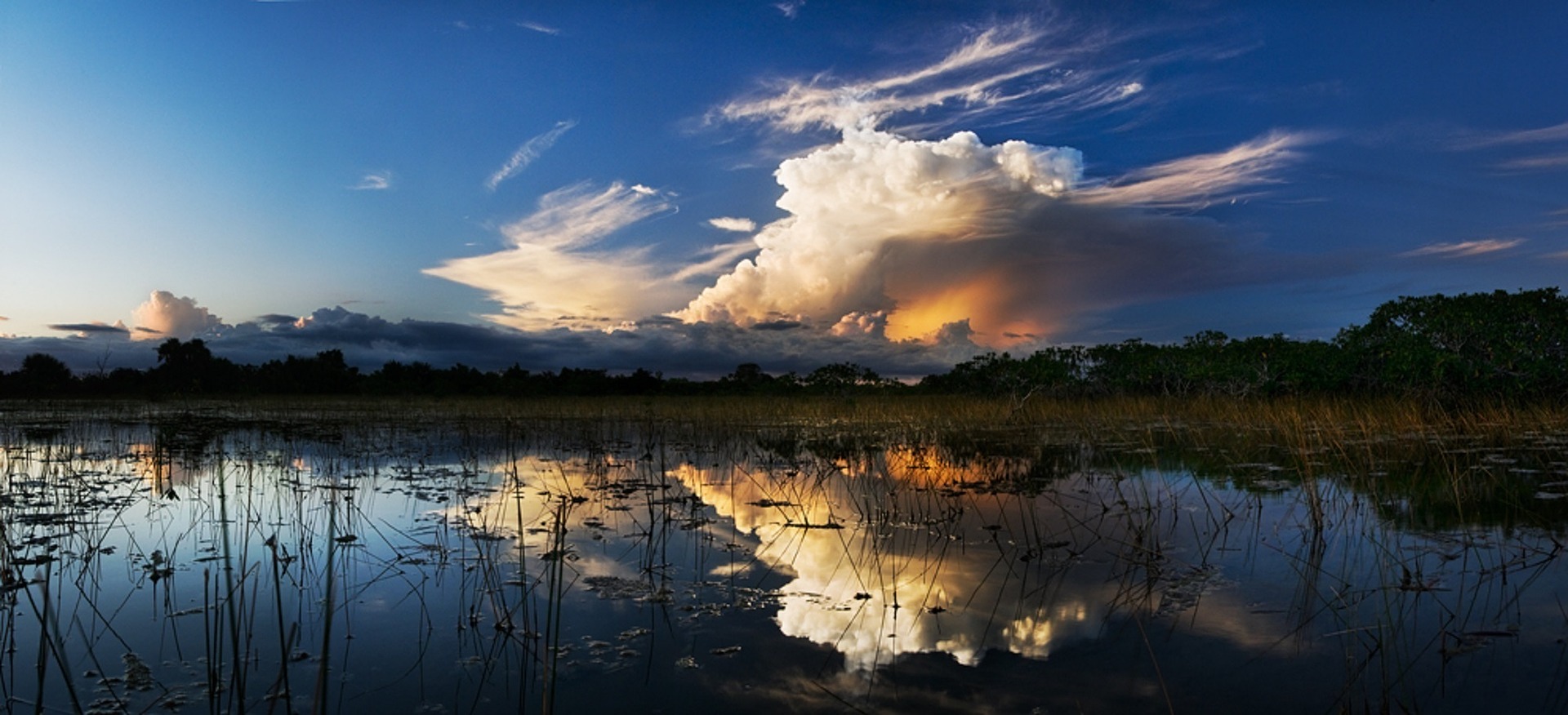Unprecedented threats expected for many species
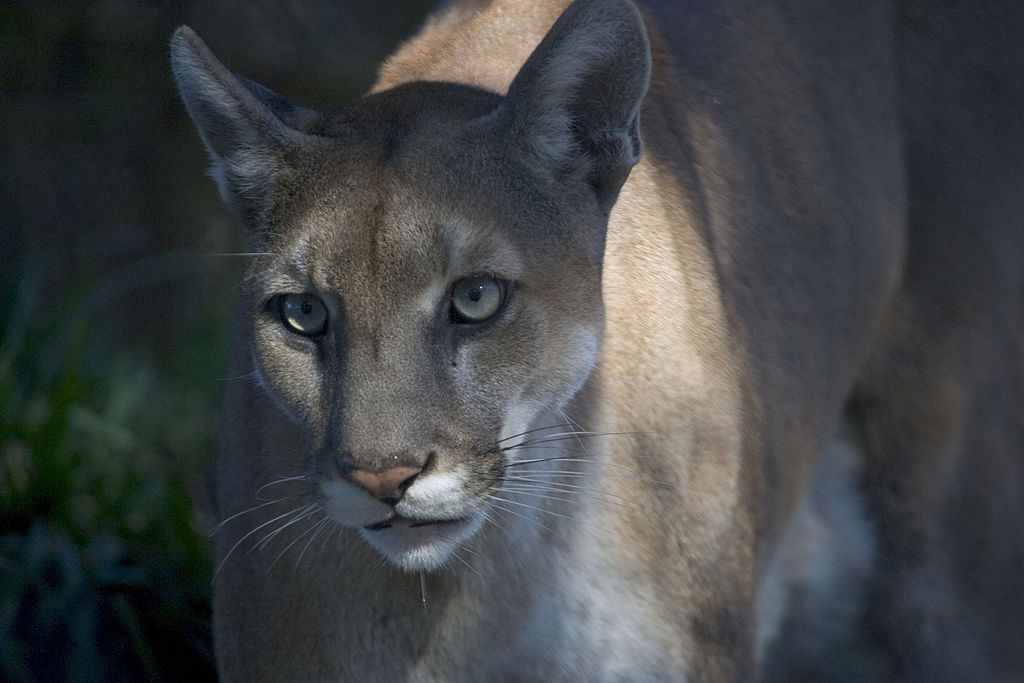
One of Florida’s endangered species – the Florida Panther
Earth is home to more than 8 million species. Much of this diverse population is concentrated in a few special regions known as biodiversity hotspots. Florida is such a place, so is the Amazon.
Plant and animal species tend to form groups that naturally associate with each other and their environment. Biologists recognize 81 of these natural communities in Florida, within which there are 131 endangered or threatened species. We already know that our changing climate poses a threat to global biodiversity. Less well understood is how that biodiversity loss occurs over time – will biodiversity patterns change gradually alongside climate change, or suddenly at specific threshold points?
Predicting the Future
In a recently published article, Christopher Trisos and colleagues suggest that future disruptions in biodiversity will happen abruptly in many locations, when climate conditions shift beyond the known natural limits of the local species.
Their study mapped the natural range of more than 30,000 land and ocean species across a global grid of 100 km cells, using historical climate data for the period from 1850 to 2005 to identify the highest recorded annual average temperature within each species’ global range. This arbitrary grid is not meant to directly represent natural species communities. Nonetheless, results show a strong similarity between acceptable temperature ranges for the mix of species found in any given cell. More than 50% of land species in a cell were found to have a similar temperature range across their geographic range. Marine species have even more in common, with 90% sharing the same temperature range.
This means that biodiversity disruptions due to climate warming can occur abruptly, and potentially catastrophically, as entire groups of species in a given location simultaneously experience temperatures above their historical climate limits. Persistent abnormally high temperatures are known to have negative effects on species reproduction, growth, foraging, disease resistance, behavior and overall competitiveness.
This led the team to identify a risk threshold for each species, defined as the point at which, for at least five consecutive years, mean annual temperature in a cell exceeds the highest annual average temperature ever recorded for that species anywhere in its geographic range, in the period from 1850 to 2005.
Using the well-understood “business as usual” greenhouse gases climate warming simulation to project future annual average temperatures in each cell, the team was able to identify the percentage of species in a cell that passed their respective risk thresholds. In the case where many species in a cell are subject to similar temperature limits, the percentage of species at risk can increase precipitously within a single decade. That percentage is used to determine the “abruptness” of the onset of species threat in the cell.
Tropical Regions at Greatest Risk
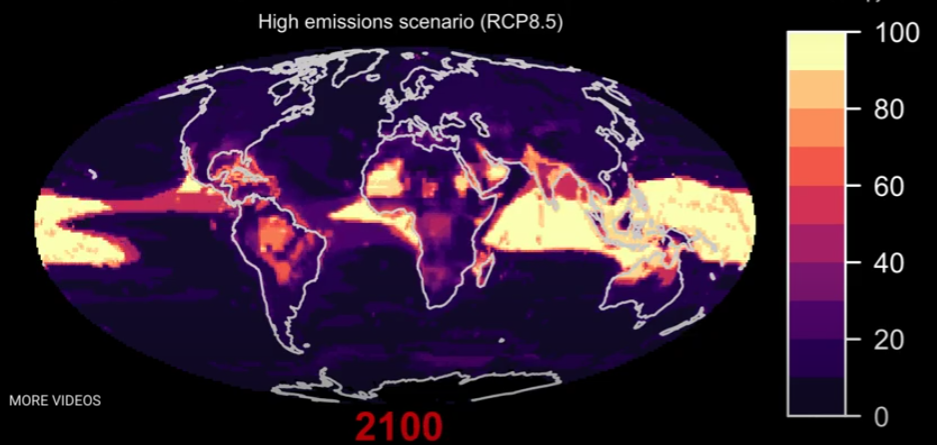
A global map of species risk levels by 2100, given “business as usual” growth in greenhouse gas concentrations. Source: Climate Risk Laboratory
The image above graphically demonstrates the global distribution in 2100 of species at risk from rising temperatures in the business as usual scenario. The image was extracted from an animation of the increase in species risk from the present day to 2100, created by the Climate Risk Laboratory.
The effects of rising temperatures on species in the ocean or on land is predicted to hit earliest and hardest in the tropics, even though climate warming is less dramatic at lower latitudes. Because tropical species are accustomed to relatively small temperature ranges, they live closer to their risk threshold than mid-latitude species, and a small increase in annual average temperature can have dramatic effects.
In the tropics overall, fully 68% of terrestrial cells, and 39% of marine cells are predicted to have at least 20% of their species exposed to temperatures beyond their risk threshold by 2100. Grid cells in the Amazon basin are predicted to have more than 90% of species at risk by 2100
What Does it Mean for Florida?
Florida is a biodiversity hotspot lying partly in the subtropics. As a result, Florida species are at considerable risk from rising temperatures, although less dramatically so than their counterparts in the Amazon. To home in on the implications of the Trisos et al study for Florida, we used available online tools to explore the simulation results. Our results are shown in the following maps: (a) a map of Florida with a red data marker in the Everglades area of south Florida; (b) a map showing the land-species cells and the percentage of species in each cell that will be beyond their risk threshold by 2100 (given the business as usual climate model); and, (c) a map identifying the midpoint year of the decade in which the greatest number of species pass their temperature risk thresholds.

(a) Map of Florida, with the area of interest in the Everglades shown in red. IMAGE: Chenyang Wei
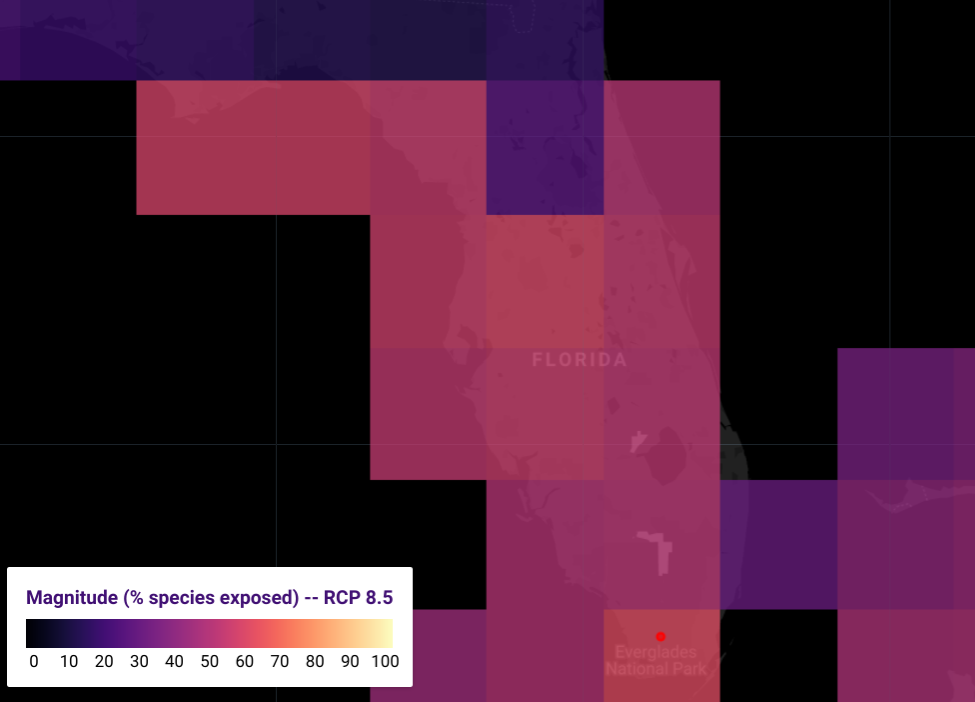
(b) 100 km grid cells for land species in Florida, showing the magnitude of species exposure by 2100 for each cell. IMAGE: Chenyang Wei
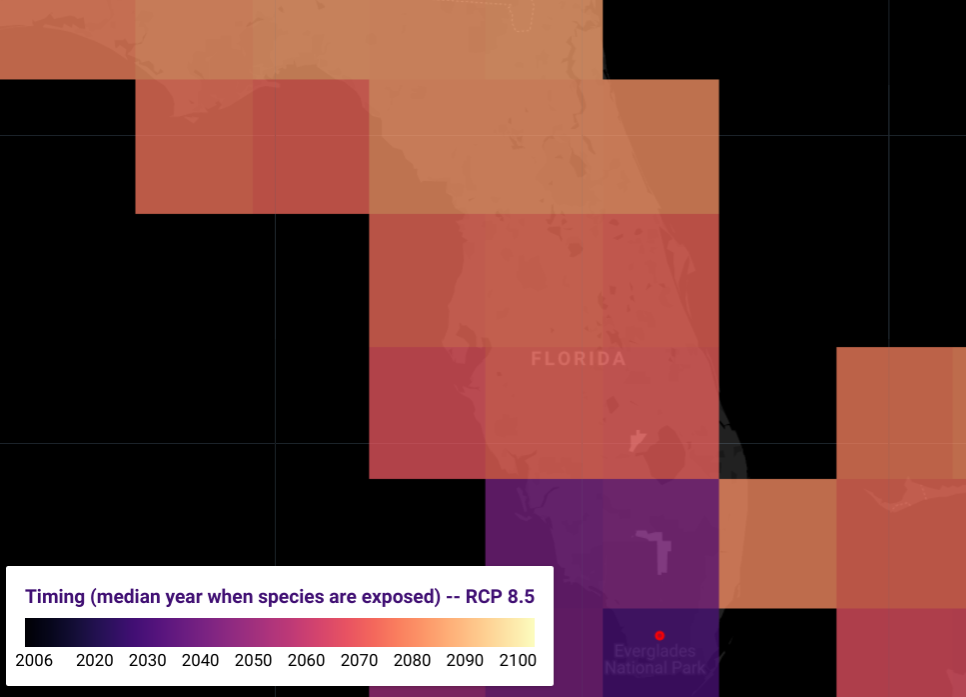
Florida grid cells showing the median year of the decade of maximum species exposure. IMAGE: Chenyang Wei
For our Everglades data point, 62% of all land species will be beyond their temperature risk threshold by 2100. Fully two-thirds of that group will pass their threshold in the decade from 2023 to 2033 (midpoint year 2028).
The climate warming scenario for our maps is the worst case – with greenhouse gas concentrations in the atmosphere increasing along the current, uncontrolled path. However, for our Everglades data point, even the most optimistic climate scenario shows 42% of species pass their risk threshold in 2023-2033. The consequences of unprecedented temperatures on individual species in a particular locale are difficult to predict. However, beyond their known temperature range species survival is at best uncertain and the worst case of local extinction is increasingly a possibility.
The bottom line? For south Florida and the Florida Keys, the viability of a number of species is already at risk because of climate warming and that number will increase sharply within the next decade.

